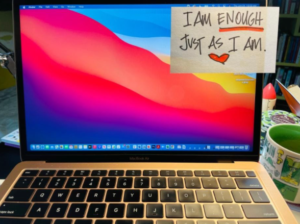
When companies think about their goals and how to achieve them, they often apply what are called rationalization strategies to do so. Supplier rationalization means reviewing your supplier relationship management (SRM), comparing it to your overall business process management plan, and your strategic sourcing strategy.
Then, if you have the right tools and best practices, kaboom you have better success and measurable ROI. Okay if I lost you there, think of it in simpler terms… what if I told you that when you start to become aware of your rationalization processes in your business it will help you improve your decision making (and your return on investment!).
In this post I’ll show you how to transfer those acronyms and rationalization processes into a simple 5 step process to assess your business so you can grab your goals with both hands!
What is Rationalization and Why Care?
Whenever you make decisions for your business or your life, you spend time rationalizing your reason to choose to do one thing or another. This means you come up with or concoct a belief or desire to make whatever you did decide to do seem rational.
Okay everyone loves to justify their actions, but guess what? According to psychology studies, after you have J.U.S.T.I.F.I.E.D. your actions, you will adjust your own beliefs and desires to match the ones you have concocted.
That means you make a decision, justify your choice, then shift your beliefs to match whatever you made up. Sounds very incestuous to me, but guess what? It actually means your brain learns and grows from doing it.
Here’s how!
According to this Harvard study, “human decision making does not rely on a single process; it is influenced by reason, habit, instinct, norms, and so on.” Several of these influences are not organized according to rational choice, but rather, rationalization pulls out implicit information – true beliefs and useful desires – from the influence of these non-rational systems on behavior. While you might be thinking – ”Isn’t this all fiction?” You would be correct, but this is a useful fiction – because it can improve subsequent reasoning. And that reasoning actually can guide you to make better decisions.
Freud believed that behavior and personality were derived from the constant and unique interaction of conflicting psychological forces that operate at three different levels of awareness: the preconscious, conscious, and unconscious.
Part of our inherent need for rationalization is to make ourselves right. I often joke about this when I hear myself or someone close to me give me a lengthy explanation for why they didn’t take out the trash or do the dishes. This is our justification of our behavior.
Then, once stated, we feel that our reasoning was clear, we are right, and we turn off any desire to do something differently. But what if you were able to catch yourself in the rationalization process? You can turn it around and learn how to save your rationalization for better things like getting your goals met.
Rationalization is an automated psychological process that your brain completes every single time you choose something. But the brain is plastic, right? So, you can train that brain to do what you want it to, well some parts of it anyway.
Rationalization is one of them. Let’s apply in 3 tips:
Rationalize to change a habit for the good.
Right this moment I just decided not to go bike riding because it was raining earlier, and I don’t want to get wet and messy. Ever since we moved to Texas, I have rationalized that rainy roads are off limits and dangerous.
But guess what, when I lived in Seattle, I rode in the rain every single day.
Why?
Because if I didn’t, I would never get to ride my bike. It always rains in Seattle. Two kinds of justification. How many of you, (show of hands) reading this right now have ever justified your way out of exercise?
I thought so.
Let’s change up our justification. Let’s rationalize that exercising in any kind of weather is going to be so much better for our physical AND mental health, that we simply HAVE TO GO NOW!
Tip 1: Flip your switch on something you have rationalized yourself into or out of.
Rationalize to set better goals.
Anyone who has a business, if they want to improve something, sets goals. Plan, Do, Track, writes Jennifer Britton in her workbook. Goal setting is random unless you are tracking your progress, specifically what you did to get you where you are, either moving forward or backwards with clients, products, processes.
If your brain is forever rationalizing what you have done and making up a story about it, what if you consciously reverse that process to track, do, plan? Choose a customer, track what they are doing, and plan based on that observation. It’s what you do already, it’s a natural part of the process.
Take the exercise example one more time. Track the days or triggers that make you less likely to workout. Then decide to change them, meaning, DO something about it, and plan your next strategy. Track your progress with that one, do something new, and plan what’s next.
Tip #2. Don’t just plan, do, track with your goals.
Track, do, plan instead! Use your rationalization functioning to trick yourself into something better.
Rationalize for Smaller Steps to Bigger Results
The biggest reason we cannot achieve our goals is often because we made them too big. So, when we can’t achieve them or don’t do it in the time frame that we set up for ourselves, we feel bad.
The easiest way to get away from feeling bad about not achieving a goal is to say it was stupid or you are stupid or find some old negative belied that someone told you from that past that you have internalized. Examples like “you’re too lazy” to finish a job or “You’re a quitter.” “you never finish anything.”
These are unfortunately the negative thinking patterns that keep us from changing and doing the riskier things we really want to do. ,But the real reason is often we are setting too high of a goal for ourselves or too aggressive of a schedule.
Start small, like “I’m going to go for a ½ jog, ½ walk for 1 mile. Then, after you have successfully done that for 3-4 days, throw in a bigger riskier thing – “I’m going to run to the store and walk back.” When 2-3 miles seems doable, then add more risk like running a 10k or a ½ marathon.
Your brain is adjusting, and rationalizing based on your experience of success or failure. It rationalizes all of it, so why not rationalize doing the good stuff and get yourself farther faster?
Tip #3 is making your initial goals challenging but achievable.
Here’s a summary…
Rationalization is an automatic process of your brain. You rationalize every decision you make with a fictional story, which you make into your reality.
Rationalization can help you to improve your results by shifting how and what you rationalize to get the results you want.
Leverage rationalization to help you shift to track, do, plan.
Rationalization works against you when you set too high of goals to start.
No matter where you are in your business or your life, remember your brain is a plastic, flexible thing. You can train it to work for you. Taking time to examine what and how you rationalize your behavior will help you make better decisions for that future you desire.
Test it out and see what you are rationalizing and shift into the new you that you are becoming. You got this!
Until next time, Up Your Creative Genius,
Patti




